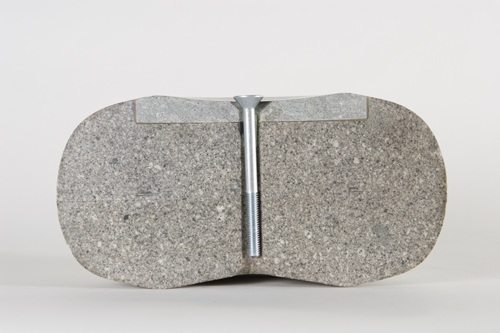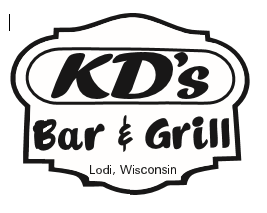Brooms
The lowly broom, typically relegated to cleaning up messes, plays an integral role in the sport of curling. With out it, little would be possible. It serves as a target and a balance aid. It makes rocks go faster, straighter and farther. It is held by the “skip” as an aiming aid for the curler delivering the rock. It also provides the curler with much needed balance during the delivery of the rock. Additionally, the sweepers, at the direction of the skip, will use their brooms to straighten the path, increase the speed or improve the distance of any rock that may have (inadvertently) been delivered incorrectly.
While the rocks are virtually similar, brooms come in all sorts of sizes and shapes. High-tech carbon fiber handled products are very popular. Today's broom shafts are mostly comprised of either carbon-fiber or fiberglass. The brush pad portion on most newer brooms have synthetic materials, or a from of Cordura nylon. The most popular of today's pads are the EQ and Norway pads. The EQ brush pads are from BalancePlus and the Norway brush pads are from Goldline. These pads are not only made of a high-grade synthetic cloth, but they also have a layer of mylar "space blanket" on the inside. This helps retain the heat generated from the friction of sweeping and insulate it back down onto the ice. Obviously, there are a variety of prices and details, but in the end it is a matter of budget and preference as to which is best for the individual. Most clubs will have a wide selection of brooms that the beginner can borrow while learning to curl. Cost: most range from about $60 to $200.
Stones
Though they have come in many different varieties and materials over the years, the majority of most modern curling stones are made from a peerless granite quarried on a small Scottish island called Ailsa Craig in the Firth of Clyde. The density and consistency of this granite has made it the ideal choice for curling stones. There are also other types of granite used in today’s curling stones. Each stone is meticulously finished to exacting specifications. It may not exceed 36″ in circumference and 4 1/2″ in height. They weigh approximately 42 pounds each. Each stone has a handle at the top that is usually molded out of plastic or a composite material.
The bottom of the stone is concave, with a flat “running surface” at the outer edge. The sides of the stone are rounded, with the exception of the equator or “strike band”, which has a flattened surface. This flattened surface is the point of contact between two stones and it helps to prevent chipping. The handle of the rocks usually has two numbers on it. One of these numbers correlates to the ice sheet number that the stone belongs to. The other number is the rock’s number. The rocks are played in order by each team, with the “lead” throwing #1 & #2, the “second” throwing #3 & #4, the “third” throwing #5 & #6 and the “skip” throwing #7 & #8. Rocks for each team are usually differentiated by having different colored handles. Modern stones are nearly identical in every aspect allowing for greater consistency and shotmaking. One set of 16 stones for a single sheet costs about $7,000 to $8,000. Fortunately, the club supplies these! Stones usually have a lifespan of 25-30 years before needing to be reconditioned depending on amount of use. Some stones can have a life span of 40-50 years depending on the type of granite used and the type of insert.
Common kinds of Curling Granite
- Blue Hone
- This type of granite is mainly characterized by its color and condition of the strike bands. Light gray with random white specks throughout stone. Blue hone is the optimum material for being used as an insert for repairing running surfaces of pitted stones.
- Ailsa Craig Common Green
- Green in color, Ailsa Craig Common Green stones have large black deposits in the stone that are outlined with white flecks. There is vast difference in the quality of Ailsa Craig Common Green granite. It can be quite good or can have a large amounts of impurities allowing for holes and rapid deterioration of striking bands.
- Red/Brown Trefor
- Red/Brown Trefor can be found in several shades of brown, and will always have white and black flecks that run throughout the stone . Trefor granite is a larger grained granite which leaves it slightly susceptible to pitting in the running surface, but make it excellent material for strike bands.
- Blue Gray Trefor
- Usually deep blue/gray color, blue gray trefor granite has prominent white flecks that can be easily spotted throughout the stone.
- Keanie
- The Keanie name derives from the family name of the company making these stones rather than the proper name of the granite. It is pinkish in color, with large white and black flecks throughout, and is a very porous material.
Hybrid
- Combination of types of granite One type might be used as the stone, while another might be used as the insert for the running surface, or bottom of the stone. (usually Trefor or Keanie with Blue Hone inserts.)

Cross Section of a Red Trefor Stone Inserted with Blue Hone Granite Insert
Shoes & Sliders
The types of shoes and sliders a curler will use is going to change as you gain more experience. For a beginning curler it would usually include a pair of clean shoes with soft rubber soles and a “slider”. This is a piece of flat synthetic material, usually Teflon that is attached to a large elastic band. The synthetic material on the bottom covers the sole of the shoe and allows the curler to slide easier when delivering the rock. The elastic holds the slider in place, on the regular shoe. The slider can be used on either shoe depending on if your right handed or left handed. A right handed curler will have the slider on his left foot. The slider comes in either a half slider, or a full slider, which covers either half, or all of the sole of the shoe. Slider typically run about $15 to $20. Most curling clubs will have sliders available as loaners, as does Lodi Curling Club. However, having your own dedicated slider will enable you to always have your preferred type of slider, and have one with good elastic to ensure placement on your shoe.
As the curler progresses in ability, their needs will change. One way to improve you curling game is with a pair of dedicated curling shoes. Curling shoes look similar to a low-cut basketball or tennis shoe, however most have the slider built into the sole of the shoe. There are different materials for the slider that provide either more or less friction, depending on the prevailing ice conditions. These shoes often come with a rubber slip-on overshoe, known as a "gripper" or "anti-slider" that covers the slider and provides traction on the ice. Prices usually start around $120 per pair and can go up to $320 depending on options. Some options for some curling shoes include the thickness of the slider/teflon, split sole versus full sole slider, lace covers, toe coating. Some shoes also have the sliders as being discs or pods and are detachable and easily changed or replaced. The discs can be replaced easily with a different thickness and/or differnet materials like teflon or steel.
For newer curlers who have found their "clean rubber soled" athletic type shoes to be a little slippery still on the ice, and do not want to purchase dedicated curling shoes. You could try using two "grippers/anti-sliders" one over each shoe, along with your slider. This should allow you to have better traction on the ice, and give you some time if you are still deciding if new curling shoes are for you.
Other Equipment
For the beginning curler there is not much else needed in addition to clean shoes for the ice to begin curling. Most clubs will allow you to use their clubs brooms and sliders. The only other thing you will want is some warm loose clothing and possibly a pair of thin, flexible gloves.
As the curler progresses in ability, there are stopwatches for timing the speed of the ice, sliding aids, and outerwear. And even curling sticks for curlers with physical limitations. Sliding aids are used in lieu of the broom during the delivery of the rock for stabilization. This is more a matter of personal preference and technique. A decent sliding aid is around $75 to $100. Curling pants are designed to provide warmth and flexibility at the same time. Jackets tend to be lined nylon. The curling stick is a relatively recent invention that allows curlers with physical limitations such as knee, hip and back problems, to continue to play the game. The stick allows curlers to deliver the rock from an upright position. This creation has extended the career of many avid curlers, and has become so popular that some clubs have leagues strictly devoted to stick curlers.













